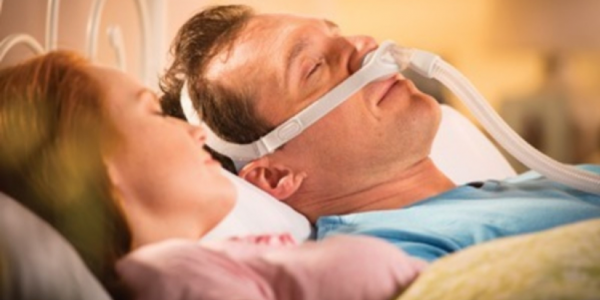You wake up with a dry and sore throat, even when you aren’t suffering from a bad cough or cold. You feel drained of energy every single workday and you can’t wait to go home to close your eyes for just a minute. Your partner complains of your loud and endless snoring, to the point where they have bought earplugs or moved to the living room couch for peace. If these scenarios sound all-too-familiar to you, you are likely suffering from a common health problem called obstructive sleep apnea.
What is obstructive sleep apnea?
The two major categories of the disorder are obstructive sleep apnea and central sleep apnea — the former has to do with the airway being blocked, and the latter has to do with the brain not signaling the muscles to breathe during sleep. They are both concerning conditions because they decrease the amount of oxygen sent to the brain, which ruins the body’s recovery process during sleep and provokes a number of side-effects. People who suffer from untreated sleep apnea will have a heightened risk of these health problems:
- Heart failure
- Heart attacks
- Stroke
- Hypertension
- Diabetes

What is the treatment for the condition?
After getting your diagnosis, you should start looking for a CPAP store in your area to find a machine and mask that works for you — a wide selection will allow you to find the best choices for your lifestyle, your sleeping position and your size. Using a continuous positive airway pressure therapy device every night is the most effective way to treat your condition. It may seem strange to put a mask over your face at first, but it will keep your airway clear and make sure that oxygen is reaching your brain. A place like ProfMed Healthcare solutions will have top-rate CPAP machines, masks and other accessories that will help you sleep soundly. There are a few lifestyle changes that will also reduce the symptoms in conjunction with the sleep aids:
- Exercising regularly
- Losing weight
- Quitting smoking
- Avoiding sleeping pills
- Reducing alcohol consumption
- Sleeping on your side instead of on your back
How common is it?
The actual statistics showing how many people suffer from sleep disorders are unclear because they are severely underdiagnosed — doctors can easily misattribute symptoms to other lifestyle choices instead of recommending that their patients undergo sleep studies. For instance, a condition like sleep apnea reportedly affects four percent of the population but some doctors believe that the number is more likely to be ten percent. It’s also difficult for people to recognize the signs of sleep apnea if they live or sleep alone because they don’t have someone else to witness their frequent snoring, gasping or pausing throughout the night.
Don’t be one of the many people with sleep apnea that ignore the warning signs and go undiagnosed. Taking the initiative to sign up for a sleep study, starting continuous positive airway pressure therapy and committing to lifestyle changes will be fantastic for your health.








